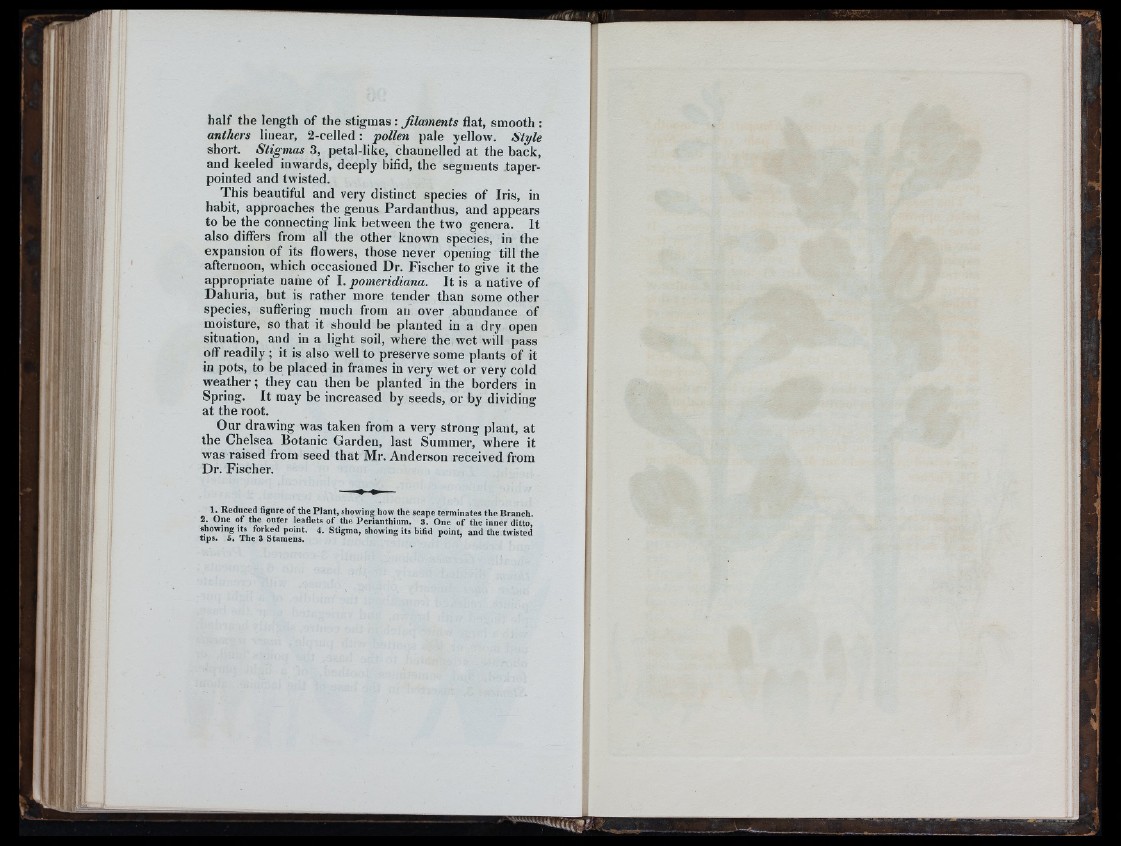
half the length of the stigmas: filaments flat, smooth :
anthers linear, 2-celled: pollen pale yellow. Style
short. Stigmas 3, petal-like, channelled at the back,
and keeled inwards, deeply bifid, the segments taper-
pointed and twisted.
This beautiful and very distinct species of Iris, in
habit, approaches the genus Pardanthus, and appears
to be the connecting link between the two genera. It
also differs from all the other known species, in the
expansion of its flowers, those never opening till the
afternoon, which occasioned Dr. Fischer to give it the
appropriate name of I. pomeridiana. It is a native of
Dahuria, but is rather more tender than some other
species, suflering much from an over abundance of
moisture, so that it should be planted in a dry open
situation, and in a light soil, where the wet will pass
off readily; it is also well to preserve some plants of it
in pots, to be placed in frames in very wet or very cold
weather; they can then be planted "in the borders in
Spring. It may be increased by seeds, or by dividing
at the root.
Our drawing was taken from a very strong plant, at
the Chelsea Botanic Garden, last Summer, where it
was raised from seed that Mr. Anderson received from
Dr. Fischer.
1. Eediiced figure of the P lant, showing how the scape terminates the Branch.
; One of the outer leaflets of the Perianthium. 3. One of the inner ditto,
«bowing its forked point. 4. Stigma, showing its bifid point, and the twisted
tips. 6. The 3 Stamens. ’